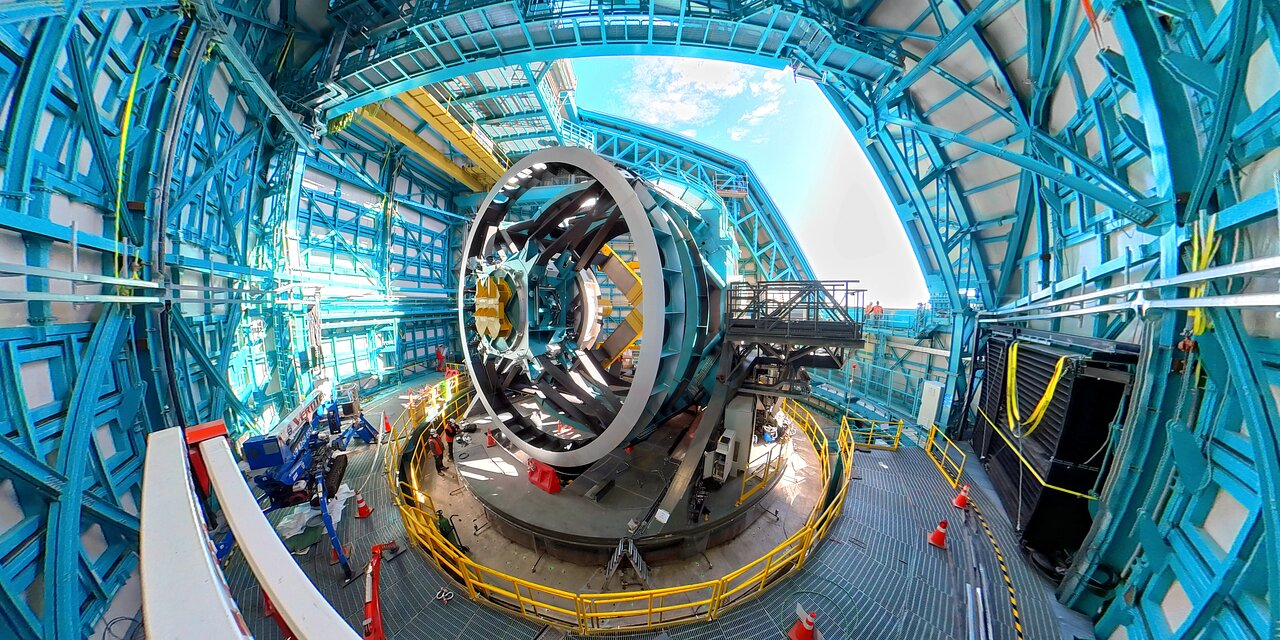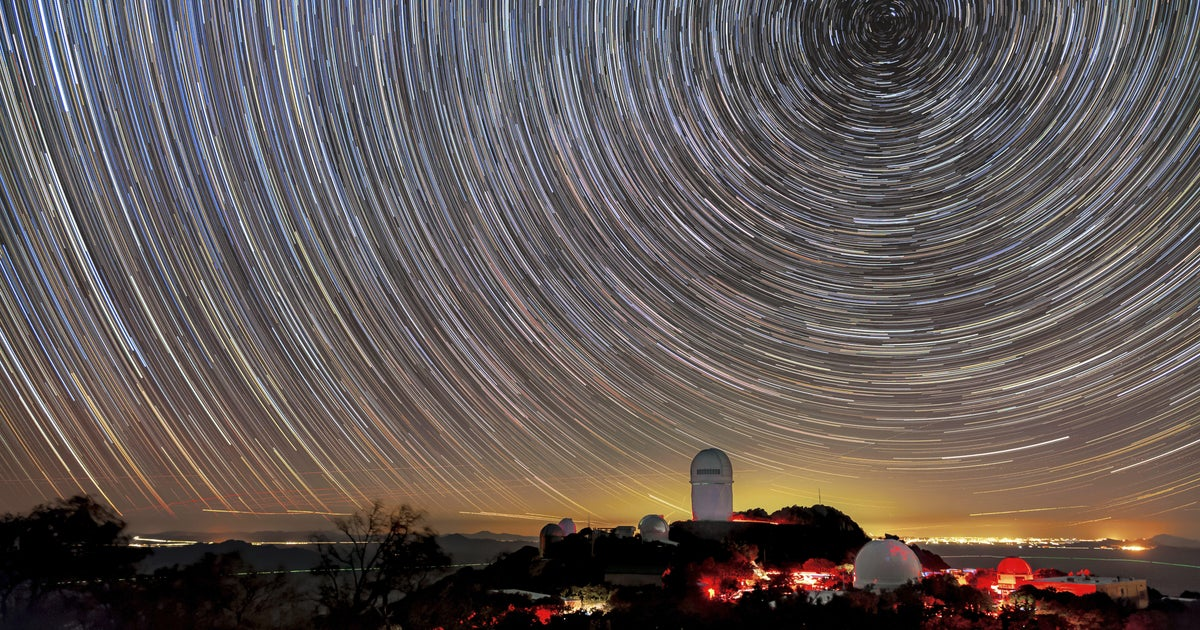The Rubin Observatory stands as a monumental achievement in the pursuit of astronomical knowledge, specifically through its groundbreaking Legacy Survey of Space and Time (LSST). As scientists gear up for a decade-long journey into the cosmos, this innovative observatory in Chile aims to unveil the mysteries of dark matter and facilitate intricate Milky Way mapping like never before. The heart of this endeavor is the cutting-edge LSST Camera, boasting a resolution that far exceeds its predecessors, enabling what researchers term “cosmic cinematography.” By capturing a wealth of data every few nights, the establishment promises to offer unprecedented insights into the dynamic nature of our universe. With these efforts, the Rubin Observatory is not just revolutionizing how we look at the night sky, but also ensuring that the data gathered will be accessible to a global community of scientists and educators alike.
At the forefront of astronomical exploration, the Vera C. Rubin Observatory represents a fusion of advanced technology and ambitious scientific goals. This facility is set to embark on the Legacy Survey of Space and Time (LSST), a project designed to explore the fabric of the universe and address fundamental questions surrounding elusive phenomena such as dark matter. Equipped with the enormous LSST Camera, which facilitates expansive photographic surveys, the observatory will engage in what is often referred to as cosmic cinematography, producing a time-lapse equivalent of the night sky over ten years. The initiative also seeks to democratize astronomy by providing open access to its data, enriching the knowledge base for both scientists and budding enthusiasts from various educational backgrounds. Ultimately, the Rubin Observatory will play a pivotal role in redefining our understanding of cosmic structures and forces in an accessible and collaborative manner.
The Revolutionary LSST Camera at Rubin Observatory
The LSST Camera, which is currently being integrated into the Rubin Observatory, stands as a monumental leap in astronomical technology. Designed to capture images with a resolution unmatched in its class, this camera will play a pivotal role in the ongoing Legacy Survey of Space and Time (LSST) project. With its 3.2-gigapixel sensor, the LSST Camera will allow astronomers to observe celestial phenomena like never before, enabling them to gather detailed data on everything from supernovae to distant galaxies. Its large aperture and wide field of view will facilitate a comprehensive sky survey, ensuring that no detail is overlooked in this ambitious decade-long project aimed at mapping the Milky Way and beyond.
Not only does the LSST Camera promise exceptional image quality, but its potential for cosmic cinematography sets it apart from traditional observational techniques. By continuously capturing photographs of the night sky every few nights, it is expected to generate unprecedented time-lapse sequences of celestial events. This capability is invaluable for studying dynamic cosmic phenomena, such as moving asteroids and transient stars, providing crucial insights into their behavior and characteristics. As scientists at the Rubin Observatory finalize the camera’s installation, enthusiasm grows regarding the upcoming opportunities for discovery and classification of new astronomical objects.
Mapping the Milky Way: A New Era in Astrophysics
The ambitious aim of the Legacy Survey of Space and Time (LSST) project is to create a detailed, three-dimensional map of the Milky Way that will revolutionize our understanding of the galaxy. By utilizing the Rubin Observatory’s advanced LSST Camera, researchers will map the positions and movements of stars and other celestial bodies within our galaxy over the next decade. This extensive mapping will not only allow for the identification of previously unseen structures but also offer insights into the gravitational influences of dark matter, which is believed to comprise a significant portion of the Milky Way’s mass.
As images and data begin pouring in from the LSST Camera, astronomers will be equipped to unravel the complex dynamics that govern our galaxy’s formation and evolution. The ability to observe billions of stars and star-forming regions simultaneously opens up exciting avenues for research into stellar populations, galactic interactions, and the detection of elusive entities like dark matter. Unpacking these mysteries could help clarify longstanding questions about the nature and composition of our universe, offering clues about dark energy as well.
Unlocking the Secrets of Dark Matter and Dark Energy
An integral goal of the Rubin Observatory’s LSST project is to enhance our understanding of dark matter and dark energy, two of the most enigmatic components of the universe. Dark matter constitutes a significant fraction of the universe’s total mass, yet it remains largely unseen, detectable only through its gravitational effects on visible matter. With the LSST’s comprehensive data collection capabilities, scientists anticipate gaining new insights into the distribution and behavior of dark matter across the Milky Way, potentially revealing patterns that could redefine current theories of cosmic structure.
Moreover, the rapid evolution of the LSST Camera allows researchers to analyze changes in the night sky over time, increasing the likelihood of uncovering evidence related to dark energy. This mysterious force drives the accelerated expansion of the universe and has perplexed physicists for decades. By utilizing the innovative design of the LSST Camera, scientists hope to quantify the influence of dark matter and dark energy more accurately, bridging gaps in our understanding while paving the way for groundbreaking theories in fundamental physics.
Public Engagement and Data Accessibility in Astronomy
An unprecedented feature of the Legacy Survey of Space and Time initiative is its commitment to open data accessibility. The Rubin Observatory recognizes the importance of making its vast astronomical dataset available not just to a select group of researchers but to the global scientific community and the public as well. This approach encourages collaborative efforts and may lead to unexpected discoveries, as amateur astronomers and educators can participate in analyzing real-time astronomical data. Through this initiative, individuals of all ages can engage with the wonders of the universe, making astronomy more inclusive.
In addition to providing immediate access to LSST data, the observatory plans to implement educational outreach programs tailored for students from kindergarten through 12th grade. By fostering an interest in astronomy and science, these programs aim to inspire the next generation of scientists, particularly in underserved communities. The accessibility of data and educational initiatives ensures that the findings from the Rubin Observatory’s ambitious mission will have a lasting impact on both the scientific community and the broader public.
The Importance of Community Collaboration in Astronomy
The LSST project underscores the importance of collaboration in advancing scientific knowledge. By involving international partners and institutions, the Rubin Observatory aims to leverage diverse expertise and resources. This collaborative model highlights a shift in how significant astronomical projects are conducted, moving away from a competitive framework to one that emphasizes teamwork and shared goals. Such an inclusive approach is crucial for addressing the vast and complex questions posed by the universe, requiring the combined efforts of scientists from various disciplines and backgrounds.
Furthermore, community collaboration extends beyond the professional researcher sphere, embracing citizens’ involvement in the discovery process. The Rubin Observatory encourages contributions from amateur astronomers and educators alike, allowing them to analyze and utilize the extensive datasets generated through the LSST Camera. This model not only democratizes scientific discovery but also fosters a greater appreciation for astronomy as an accessible field, providing a platform for a wider audience to engage with groundbreaking research and discoveries.
Challenges and Innovations in Telescope Technology
The development and integration of the LSST Camera into the Rubin Observatory highlight the innovative strides being made in telescope technology. Building a camera capable of capturing such vast amounts of data with high precision comes with significant challenges, including ensuring alignment and calibration of its complex optical systems. Innovations in materials science and engineering have enabled the construction of this monumental camera, showcasing how advancements in technology can directly impact the quality and extent of astronomical observations.
Moreover, as the need for increasingly sophisticated instruments grows, the collaboration between physicists, engineers, and astronomers becomes critical. Each aspect of the LSST project, from computer algorithms used for data processing to the physical infrastructure of the observatory itself, must work seamlessly together. Addressing the challenges faced during development not only leads to advancements in telescope technology but also provides insights that could benefit other fields, from robotics to data science, as they learn from astronomy’s high-stakes requirements.
Astrophysics and the Quest for Knowledge
At its core, the Rubin Observatory’s LSST project is more than just technology; it represents humanity’s quest for knowledge about the cosmos. The goal of studying celestial bodies, understanding their interactions, and deciphering the universe’s hidden mechanisms ties deeply into our innate curiosity as a species. As astronomers embark on this ten-year journey of exploration, they seek answers to fundamental questions that persist in astrophysics: What is the nature of dark matter? What role does dark energy play in the expansion of the universe? These inquiries illuminate not just our understanding of the cosmos, but also our place within it.
The tools at the disposal of researchers today, such as the LSST Camera, empower a new era of exploration that pulls humanity closer to answering these grand questions. By harnessing advanced technologies and open scientific practices, the Rubin Observatory stands at the forefront of groundbreaking discoveries. In a broader sense, this project serves as a reminder of the endless possibilities available when we harness curiosity and collaboration to unravel the mysteries of the universe.
A Vision for the Future of Astronomy and Education
The Rubin Observatory, through the LSST project, is not only about advancing scientific research; it is also about redefining the landscape of astronomy education. By committing to making astronomical data accessible to a global audience, the observatory empowers future generations to explore and understand the universe. The aim to engage K-12 students directly with real astronomical data fosters an environment where science is seen as an exciting and vibrant field, filled with exploration and discovery.
Looking forward, the lessons learned from the LSST project can set a precedent for future initiatives in astronomy and other scientific disciplines. Promoting an ethos of open access and collaboration can inspire a new wave of scientific inquiry, where insights and discoveries are shared across borders and disciplines. As students and young scientists engage with this rapidly evolving field, they may become not just participants but future leaders in the quest to understand the cosmos, carrying forward the legacy of knowledge and curiosity that projects like the LSST embody.
Frequently Asked Questions
What is the Rubin Observatory and its main objective?
The Rubin Observatory, officially known as the Vera C. Rubin Observatory, is designed primarily for the Legacy Survey of Space and Time (LSST). Its main objective is to create a comprehensive map of the universe by capturing detailed images of the night sky every few nights for a decade, enabling discoveries related to dark matter and Milky Way mapping.
What is the LSST Camera and how does it enhance astronomical observations?
The LSST Camera, currently the largest astronomical camera ever constructed, enhances astronomical observations by providing high-resolution images 21 times larger than those from the test camera. With its capabilities, it allows for ‘cosmic cinematography’ by capturing a wide field of view, necessary for studying a multitude of celestial phenomena simultaneously.
How will the Legacy Survey of Space and Time contribute to our understanding of dark matter?
The Legacy Survey of Space and Time aims to improve our understanding of dark matter by collecting data over its 10-year duration that highlights gravitational effects, which are indicative of dark matter’s influence within the Milky Way. This unprecedented resolution will allow astronomers to infer more about its nature and role in the universe.
What are the expected outcomes of the Milky Way mapping conducted by the Rubin Observatory?
Through Milky Way mapping, the Rubin Observatory expects to unveil the structure and dynamics of our galaxy, offering insights into stellar populations, galactic formation, and the understanding of components like dark matter and dark energy that influence the Milky Way.
What types of celestial phenomena will the Rubin Observatory’s LSST detect during its survey?
The Rubin Observatory’s LSST will detect a wide variety of celestial phenomena, including moving objects like asteroids, supernovae, and other transient events, providing crucial data for not only astronomy but also for understanding the dynamics of dark matter.
How does the Rubin Observatory promote accessibility and education in scientific research?
The Rubin Observatory promotes accessibility and education by ensuring all data from the Legacy Survey of Space and Time is immediately available to the scientific community and engaging in educational outreach programs targeting K-12 students, exemplifying a new approach to open data in astronomy.
When can we expect the first astronomical images from the Rubin Observatory?
The first public release of astronomical images from the Rubin Observatory is expected in mid-2025, following a commissioning period for its LSST Camera after installation at the observatory.
What revolutionary approach does the Rubin Observatory bring to astronomical research?
The Rubin Observatory revolutionizes astronomical research by implementing a wide-field, large-aperture telescope that captures extensive data over a sustained period. This approach eliminates the need for focused observations on selected objects, allowing for broad scientific inquiries including the study of dark energy and the search for potentially hazardous asteroids.
What significance does ‘cosmic cinematography’ have in the context of the LSST Camera?
‘Cosmic cinematography,’ as enabled by the LSST Camera, refers to the capability of producing time-lapse images of the night sky. This allows astronomers to monitor changes and movements of celestial objects effectively, contributing significantly to the understanding of dynamic processes in the universe.
How does the Rubin Observatory’s initiative support fundamental physics research?
The Rubin Observatory’s initiative supports fundamental physics research by providing an instrument uniquely engineered to explore open questions in astrophysics, particularly regarding dark matter and dark energy, maximizing observational capacity and fostering collaboration across the scientific community.
| Key Point | Details |
|---|---|
| Simonyi Survey Telescope | Operational telescope capturing images of the night sky using the Commissioning Camera. |
| Legacy Survey of Space and Time (LSST) | A 10-year project aiming to create a comprehensive map of the universe. |
| Engineering Milestone | First images captured in October, showcasing operational capabilities of telescope and software. |
| LSST Camera Details | Largest astronomical camera ever built, 21 times larger than the test camera. |
| Data Accessibility | All data will be immediately available to scientists and for educational outreach. |
| Revolutionary Approach | New method of making wide-open data sets available for broader scientific collaboration. |
| Focus on Dark Matter & Energy | Project aims to provide insights into the nature of dark matter and dark energy. |
Summary
The Rubin Observatory is at the forefront of astronomical advancement with its impressive Legacy Survey of Space and Time (LSST) project. With groundbreaking technology designed to map the universe, the observatory’s LSST Camera will revolutionize how scientists study the cosmos. This initiative not only aims to provide an expansive dataset for researchers but also prioritizes educational outreach, making the universe more accessible to the public. As the observatory progresses towards its ambitious goals, it stands as a beacon of innovation and collaboration in the scientific community.




